News & Events
Selecting an AC-DC open-frame power supply: 2 Major Tips to Keep In Mind
22
May
May 22, 2020

Choosing a Right PSU Matters:
AC-DC power supplies are essential to a lot of end applications as major power supply units (PSUs). More and more manufacturers provide a wide variety of choices to engineers. However, some of the PSUs may be suitable to your device, but some are not due to the PSU design. Therefore, to choose a right PSU is an important key to project success.
Here are 2 tips for you to consider:
1. Class I or Class II for your system?
2. Heat dissipation to the power supply
Class I or Class II for Your Application:
As we all know that a PSU is the key component to make your device work. The first thing you need to confirm is to figure out if your end application has ground (earth) connection.
If the system design of the device includes the ground (earth) connection, a Class I power supply is the correct choice. On the other hand, if it does not include, a Class II power supply is the right one. The EMC testing result is deeply affected by the power supply. In this case, you need to pay more attention on that.
In many cases, when an end application is a portable device, it’s common to see that a Class II power supply is chosen. It’s because there’s more uncertainty of AC source where people use the devices. We don’t know if the AC source is connected with the ground. In other cases, Class I power supplies are chosen.
For user’s convenience, unlike many of power supplies which only have one version, Cincon also developed some series which could be used as either Class I or Class II. We will offer more in the near future.
| Series | Output Power | Input Voltage (Vac) |
Output Voltage (Vdc) |
Eff. | Package / Dimension (inch) | Application |
|---|---|---|---|---|---|---|
| CFM130M | 130W | 80~264V | 12V, 24V, 36V, 48V | Up to 94% | 3.000x2.000x1.20(Open-frame) 3.598x2.000x1.299(Baseplate) 3.598x2.520x1.358(Cover) |
Medical |
| CFM150S | 150W | 90~264V | 12V, 24V, 28V, 36V, 48V | Up to 94% | 4.00x2.00x1.283(Open-frame) 4.598x2.00x1.362(Baseplate) |
ITE/Industrial |
| CFM200M | 200W | 90-264V | 12V, 24V, 48V | Up to 93.5% | 4.000x2.000x1.480(Baseplate) 4.606x2.441x1.594(Cover) |
Medical |
In addition, while you choose a Class I power supply, it’s very important to know how to mount it and connect to the ground. Take Cincon AC-DC medical power supply CFM130M as the example, we provide the detailed instruction in the application note. There are three mounting types:
 |
|
Figure 1: CFM130M direct mounting type |
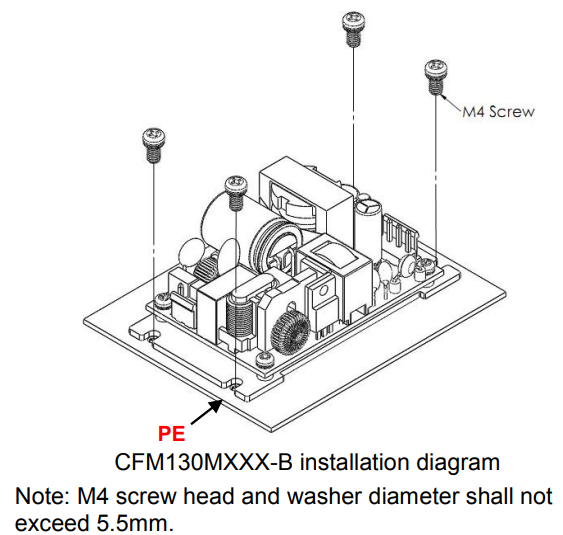 |
|
Figure 2: CFM130M mounting type with baseplate-cooling solution |
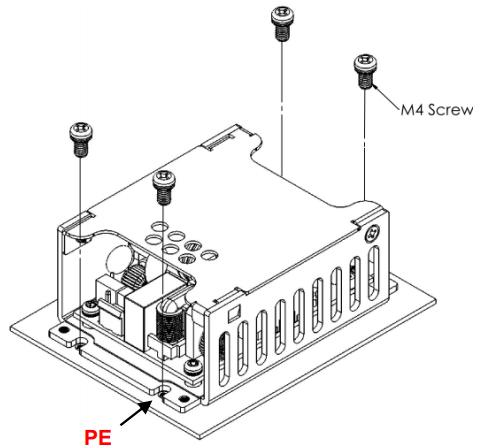 |
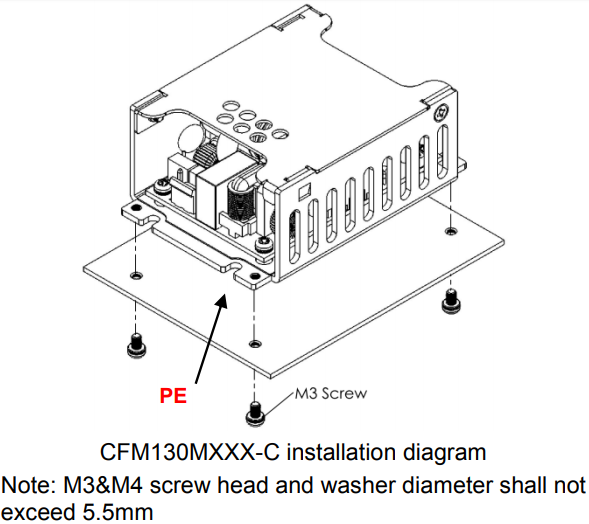 |
Figure 3 & 4: CFM130M mounting type with cover
Furthermore, Cincon also points out the “must-have” clearance as the reminder required by the safety standard.
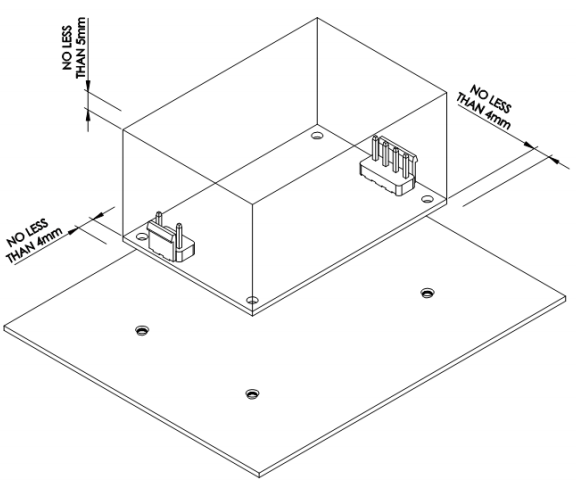
Figure 5: The clearance needed to be noticed
Heat Dissipation to The Power Supply:
While choosing an open-frame supply, you may need to figure out the ambient temperature of the surrounding area of the power supply, meaning the temperature inside the end application.
The heat dissipation solution has the direct influence on the power supply lifetime and output power. The higher the temperature is, the lower the output power and lifetime are. The figure 6 & 7 shows the lifetime of core components of CFM130M under 25℃ & 40℃. You could see the decrease of the lifetime due to the higher ambient temperature.
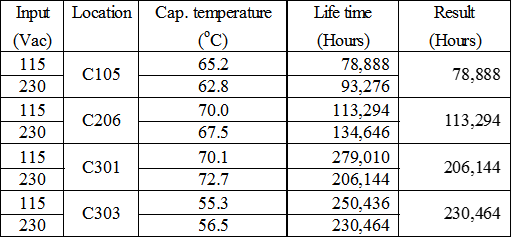 |
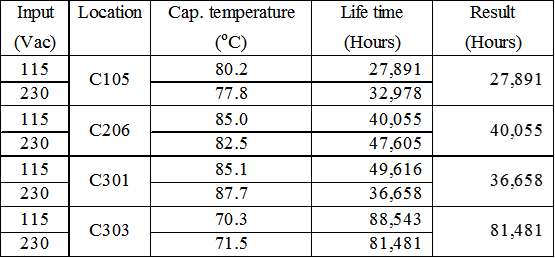 |
Figure 6 & 7: 25℃ V.S 40℃ of component lifetime
The common solutions of heat dissipation are natural convection, fan-cooling type and both. In some end applications, an engineer may face the dilemma that he/she prefers the fanless solution, but the temperature would be still higher without a fan.
To solve this problem, Cincon provides the baseplate-cooling design as the alternative of fanless solution. As you see from the figure 8. The purple line shows the CFM130M without the baseplate only has 100W output power, but the blue line shows the series with the baseplate has a higher output power 110W. The baseplate directs the heat to the case of the device, and this reduce the temperature of the power supply resulting in higher output performance.
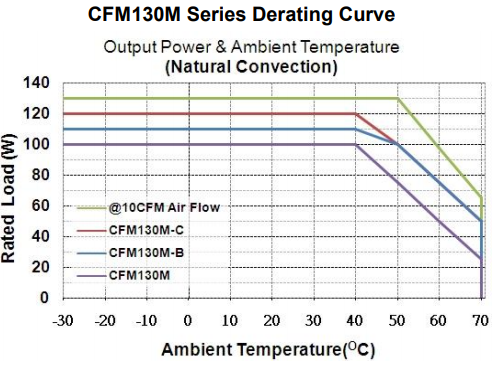
Figure 8: derating curve of the output power
The following are the Cincon products with baseplate-cooling design:
| Series | Output Power | Input Voltage (Vac) |
Output Voltage (Vdc) |
Eff. | Package / Dimension (inch) | Application |
|---|---|---|---|---|---|---|
| CFM130M | 130W | 80~264V | 12V, 24V, 36V, 48V | Up to 94% | 3.000x2.000x1.20(Open-frame) 3.598x2.000x1.299(Baseplate) 3.598x2.520x1.358(Cover) |
Medical |
| CFM150S | 150W | 90~264V | 12V, 24V, 28V, 36V, 48V | Up to 94% | 4.00x2.00x1.283(Open-frame) 4.598x2.00x1.362(Baseplate) |
ITE/Industrial |
| CFM200M | 200W | 90-264V | 12V, 24V, 48V | Up to 93.5% | 4.000x2.000x1.480(Baseplate) 4.606x2.441x1.594(Cover) |
Medical |
| CFM300S | 300W | 90-264V | 12V, 24V, 36V, 48V | Up to 94% | 5.000x3.000x1.421(Baseplate) 5.355x3.425x1.591(Cover) |
ITE/Industrial |
| CFM300M | 300W | 90-264V | 12V, 24V, 36V, 48V | Up to 94% | 5.000x3.000x1.421(Baseplate) 5.355x3.425x1.591(Cover) |
Medical |
If you follow the 2 tips, it would be easier to help you find the right open-frame power supply. Contact Cincon if you need any technical supports!
e-mail: sales@cincon.com.tw













































